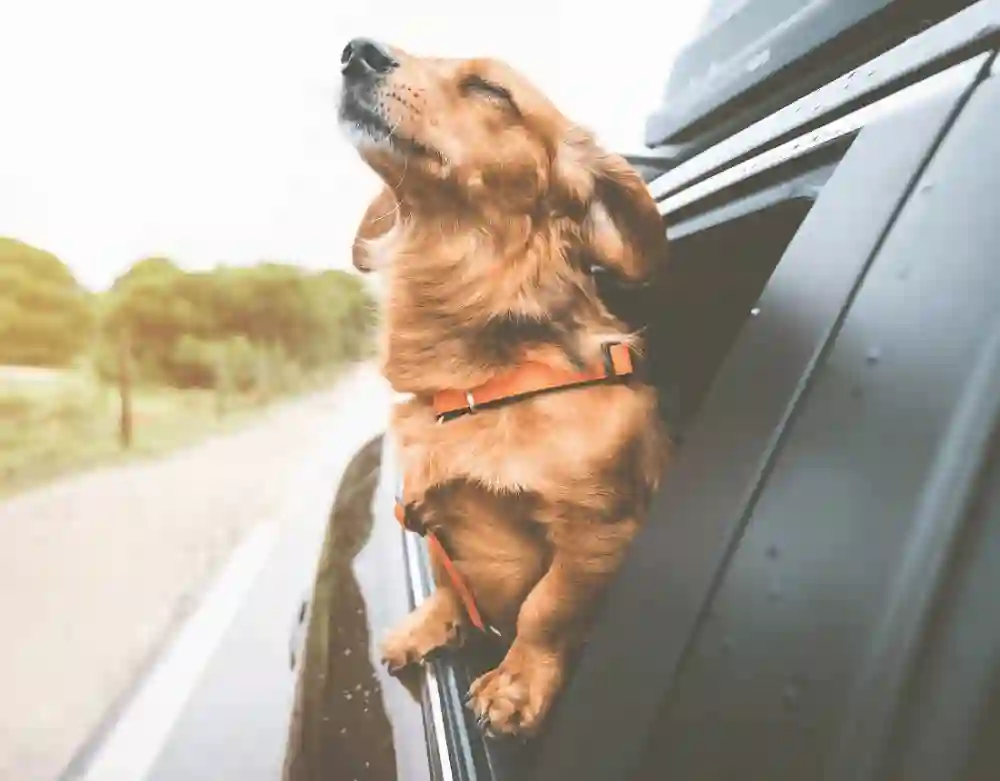How to Teach Your Dog to Stay Calm During Car Rides

Okay, picture this: You and your dog are heading out for a car ride, and what’s supposed to be an exciting journey turns into an uncontrollable whirlwind of barking, drooling, and—yep—vomiting. Fun, right? I’ve been there. But don’t worry, there is hope. With some patience, a pinch of humor, and a solid plan, you can teach your dog to stay calm during car rides. And trust me, it’ll make both your lives a whole lot easier.
So, let’s dive in. We’re going to break this down into bite-sized chunks so you don’t feel like you’re swallowing an encyclopedia. (Speaking from experience, that’s never fun.)
Why Dogs Get Anxious During Car Rides
First things first—let’s figure out why your dog might act like a nervous wreck in the car. You know, aside from the fact that they’ve already eaten half your seatbelt and probably some of the upholstery too.
Motion sickness is a classic culprit. If your dog’s stomach is a bit…fragile (hello, drool puddles), that can make the car feel like a rollercoaster of doom.
Then there’s lack of control. If your dog’s used to running around freely and suddenly they’re stuck in a confined space, it’s like sending them to time-out, and no one likes that.
Oh, and don’t forget bad past experiences. Take it from me—I once took my dog to the vet and she hasn’t looked at a car the same way since. She’d rather take a 20-mile walk than get into the car.
Lastly, some dogs are just plain excitable. Take my buddy Max, who gets so hyped about car rides, he practically explodes with joy…which, needless to say, is far from calming.
How to Teach Your Dog to Stay Calm During Car Rides
Alright, you get it—your dog’s freaking out, but how do you teach them to chill out? Buckle up, because here’s what worked for me (and, hopefully, what’ll work for you).
Step 1: Make the Car Fun (Seriously)
Here’s a little trick I learned the hard way: make the car seem less like a place of torture and more like a fun ride. You know, like how people look at Disneyland—minus the lines.
Start Slow: This isn’t a race. Start by letting your dog check out the car while it’s parked and turned off. Don’t rush this part. Just let them sniff and get comfortable with the space. It’s like the first day of school for your dog, minus the homework.
Treats, Treats, and More Treats: Every time your dog gets into the car (without turning into a maniac), reward them. I know it sounds cliché, but trust me—treats work. And if you have a picky eater (like my golden retriever, Bella), this is a game-changer.
Keep It Short: Okay, so maybe the first trip should be a drive around the block, not a cross-country road trip. Start small, like a 10-minute jaunt to the park. Build up from there. You can’t expect them to be calm on a 3-hour drive when their longest car trip has been the length of a Taco Bell run.
Bring Comfort: If your dog has a favorite toy or blanket, bring it along. It’s like a little slice of home on wheels. Mine always wanted her stuffed squirrel—her name’s Cindy, by the way—along for the ride.
Step 2: Get Your Dog Used to Being in the Car
You can’t just expect your dog to chill out on the first go. It’s like expecting a toddler to sit still for a three-course dinner. Training takes time. Here’s how I did it:
Teach Your Dog to Stay Put
This was a game-changer. I taught my dog to stay calm by getting her to sit or lie down during the ride. It’s not just about getting them to “be good”—it’s about creating a safe environment for them. And don’t get me started on the benefits of teaching them the “down” command. If you have a hyper dog, this will save you from losing your mind when they’re jumping all over the place.
Step 3: Increase Ride Duration Gradually
Once your dog has gotten the hang of a 10-minute trip to the park, don’t just jump into a cross-state vacation. Increase the ride length gradually. Start slow, like a local errand run, and slowly work your way up to longer trips.
Pro Tip: If you’re ever traveling with your dog for more than an hour, pack some water and maybe a snack for them. This will make them feel more at ease (and less likely to stare at you like you’re the one who’s stressed).
Step 4: Prevent Car Sickness (No, It’s Not Just You)
Okay, so let’s address the big elephant in the room: motion sickness. I’ve been there, and I wouldn’t wish it on anyone. My dog once threw up on my favorite leather seat. Rookie mistake. So, here’s how to avoid that nightmare:
Avoid Food Right Before: This is a tip I learned after I, uh, had a very “memorable” car ride where my dog ate her dinner and then promptly made it…disappear. Let’s just say don’t feed your dog right before the trip.
Ventilate: Get that fresh air moving, especially if you’re driving on a hot day. Open the windows a bit, or use the AC. You’d be surprised how much this helps settle an upset stomach.
Take Breaks: If you’re going on a long trip, stop every now and then. Let your dog stretch, breathe, and get their bearings. My dog, Luna, used to get so worked up on long trips, and the only thing that calmed her down was a quick pit stop.
Step 5: Address Anxiety Triggers
If your dog’s a nervous wreck in the car (and trust me, mine was), you’ll want to desensitize them to whatever’s causing the anxiety.
Desensitize to the Car Starting: The sound of the engine can be a trigger. To solve this, I started the car, sat in it for a few minutes, and gave my dog some love and treats. It didn’t take long for her to learn that the sound of the engine wasn’t a death sentence.
Don’t Freak Out: I can’t stress this enough—if you’re calm, your dog’s more likely to be calm. It’s like the time I tried teaching my dog to stay in the crate, but every time she whimpered, I rushed to open it. Yeah, that didn’t work. She caught onto my “panicked energy” real quick.
Step 6: Train with Cues and Tools
I love me some training tools—when used properly, they can save your sanity. The clicker is a game-changer for me. I clicked for calm behavior, and the next thing I knew, my dog was chilling like a cucumber in the back seat.
As for car seats or crates, don’t just let them roam around. It’s not only safer, but it also helps reduce their anxiety. I started using a harness, and it worked wonders. Less wiggle, more chill.
Step 7: Consistency is Key
Look, if you think your dog’s going to magically be calm on the first trip, well, think again. Consistency is everything. Keep at it. If they’re barking? Ignore it. If they’re anxious? Calmly redirect them. Every. Single. Time.
Trust me, this works. And yes, you’ll have bad days. We all do. Just remember, you’re teaching your dog, and training takes time. They’ll get there eventually.
Conclusion
So, there you have it. Teaching your dog to stay calm on car rides isn’t rocket science, but it does take patience and a fair bit of effort. The key is making the car a fun, positive experience, creating calmness through training, and addressing anxiety triggers head-on.
Anyway, here’s the kicker: My dog, Luna, now jumps into the car like it’s a personal Uber. It only took me a few months of some sweaty drives, spilled treats, and a couple of car-seat rebellions—but we made it. And now, every trip is a breeze.
So, teach your dog to be a road trip buddy, and your adventures will be much more relaxing. Trust me—your car’s upholstery will thank you.







